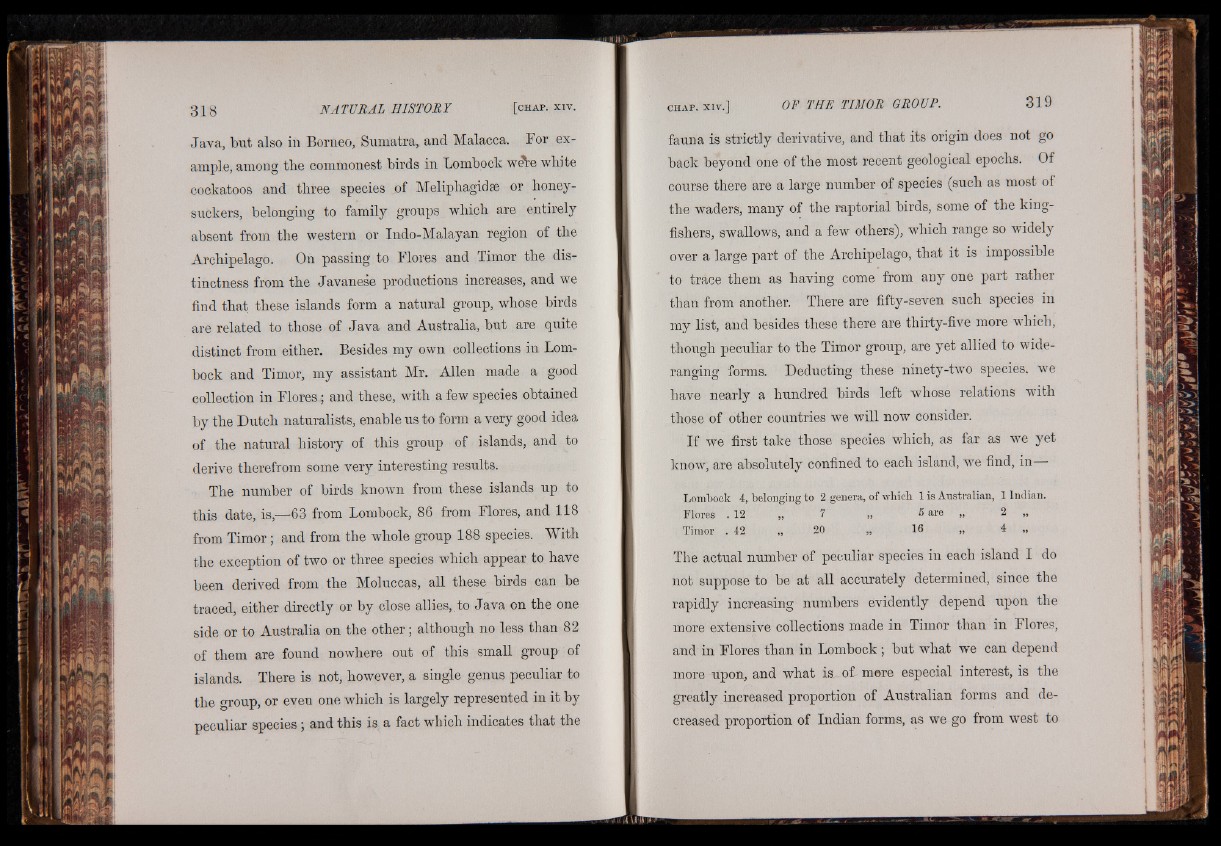
Java, but also in Borneo, Sumatra, and Malacca. For example,
among the commonest birds in Lombock w£le white
cockatoos and three species of Meliphagidse or honey-
suckers, belonging to family groups which are entirely
absent from the western or Indo-Malayan region of the
Archipelago. On passing to Flores and Timor the distinctness
from the Javanese productions increases, and we
find that these islands form a natural group, whose birds
are related to those of Java and Australia, but are quite
distinct from either. Besides my own collections in Lombock
and Timor, my assistant Mr. Allen made a good
collection in Flores; and these, with a few species obtained
by the Dutch naturalists, enable us to form a very good idea
of the natural history of this group of islands, and to
derive therefrom some very interesting results.
The number of birds known from these islands up to
this date, is,—63 from Lombock, 86 from Flores, and 118
from Timor; and from the whole group 188 species. With
the exception of two or three species which appear to have
been derived from the Moluccas, all these birds can be
traced, either directly or by close allies, to Java on the one
side or to Australia on the other; although no less than 82
of them are found nowhere out of this small group of
islands. There is not, however, a single genus peculiar to
the <*roup, or even one which is largely represented in it by
peculiar species ; and this is a fact which indicates that the
fauna is strictly derivative, and that its origin does not go
back beyond one of the most recent geological epochs. Of
course there are a large number of species (such as most of
the waders, many of the raptorial birds, some of the kingfishers,
swallows, and a few others), which range so widely
over a large part of the Archipelago, that it is impossible
to trace them as having come from any one part rather
than from another. There are fifty-seven such species in
my list, and besides these there are thirty-five more which,
though peculiar to the Timor group, are yet allied to wide-
ranging forms. Deducting these ninety-two species, we
have nearly a hundred birds left whose relations with
those of other countries we will now consider.
If we first take those species which, as far as we yet
know, are absolutely confined to each island, we find, in—
Lombock 4, belonging to 2 genera, of which 1 is Australian, 1 Indian.
Flores .1 2 „ 7 „ 5 are „ 2 „
Timor . 42 „ 20 „ 16 „ 4 „
The actual number of peculiar species in each island I do
not suppose to be at all accurately determined, since the
rapidly increasing numbers evidently depend upon the
more extensive collections made in Timor than in Flores,
and in Flores than in Lombock; but what we can depend
more upon, and what is of more especial interest, is the
greatly increased proportion of Australian forms and decreased
proportion of Indian forms, as we go from west to